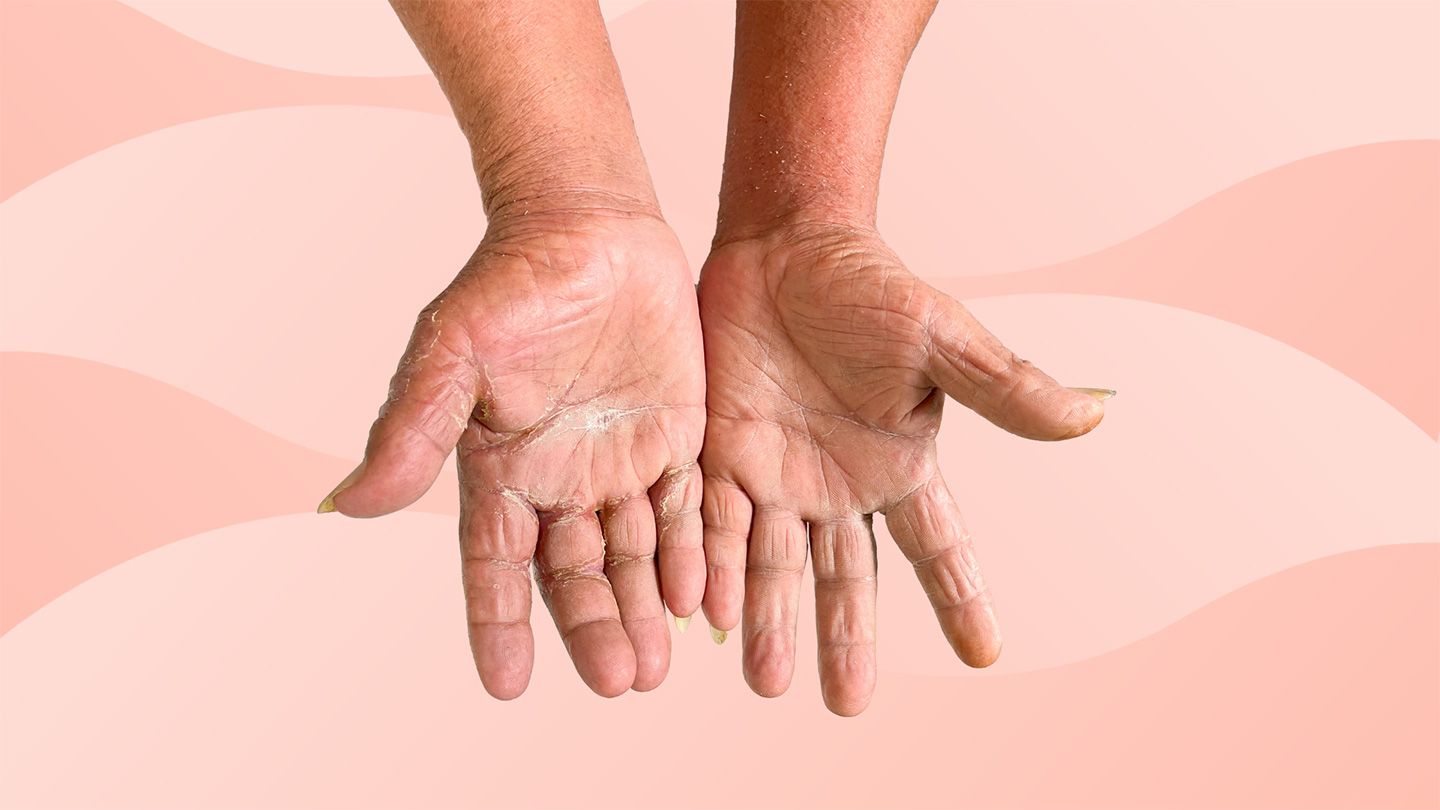Scleroderma is a rare autoimmune condition in which the regulation and deposition of collagen is impaired, causing inflammation and fibrosis (thickening and scarring of connective tissue) throughout the body. This includes the blood vessels, internal organs, and digestive tract, and it can have potentially life-threatening consequences.e60dc2a1-f33c-4a05-9b50-8e3e8e5976295f408b3d-fdca-41d2-974b-ca5822dc937c Unfortunately, scleroderma is a chronic condition for which there is no cure, but with the right treatment and lifestyle choices, you can minimize the impact of scleroderma on your life.e60dc2a1-f33c-4a05-9b50-8e3e8e5976295f408b3d-fdca-41d2-974b-ca5822dc937c
Types of Scleroderma Types There are two broad categories of scleroderma: localized and systemic. Localized scleroderma affects only the skin and the area directly underneath, while the effects of systemic scleroderma can spread to tissue, blood vessels, and organs, including those of the respiratory and digestive systems. Each broad category also has two subtypes.e60dc2a1-f33c-4a05-9b50-8e3e8e597629ae4c4fd0-14d4-4680-859d-eddf5ea4c23f Localized Scleroderma Morphea involves patches of localized scleroderma a half-inch or more in diameter. Linear scleroderma is thickening and forms a line, which usually extends down a limb but can also run down the face.e60dc2a1-f33c-4a05-9b50-8e3e8e597629ae4c4fd0-14d4-4680-859d-eddf5ea4c23f Systemic Scleroderma Limited cutaneous scleroderma affects the skin slowly over time. It’s typically confined to your fingers, hands, lower arms and legs, usually below the knees. Diffuse cutaneous scleroderma takes effect quickly. It may begin with your fingers and toes before spreading across your arms, legs, and torso and can affect multiple organs, including the gastrointestinal tract, kidneys, lungs, and heart.e60dc2a1-f33c-4a05-9b50-8e3e8e597629ae4c4fd0-14d4-4680-859d-eddf5ea4c23f
Signs and Symptoms of Scleroderma Symptoms Scleroderma affects different people in different ways, depending on which kind they have.e60dc2a1-f33c-4a05-9b50-8e3e8e597629e0402d17-cf86-4336-846b-672aec1c3963 Systemic scleroderma may include some or all of the symptoms of localized scleroderma. Localized Scleroderma Symptoms Patches of thick, hardened, oval-shaped skin, possibly with a yellow, waxy appearance with an edge resembling a bruise (morphea) Thickened or discolored skin that forms a line running down an arm, leg, and, rarely, foreheade60dc2a1-f33c-4a05-9b50-8e3e8e597629e0402d17-cf86-4336-846b-672aec1c3963
Systemic Scleroderma Symptoms Red spots (called telangiectasia) Calcium deposits under the skin, especially the fingertips Raynaud’s phenomenon , which causes pain or numbness in your fingers and toes as a result of contraction of the small blood vesselse60dc2a1-f33c-4a05-9b50-8e3e8e597629dd19887d-a501-4f4c-a329-452dab8bb81b Bloating Diarrhea Incontinence Constipation Heartburn Difficulty swallowing Shortness of breath Dizziness Fatigue Pulmonary hypertension Heart failuree60dc2a1-f33c-4a05-9b50-8e3e8e5976290158b728-3c5e-43cd-8f49-f869a6ffb807 Organ damage Joint paine60dc2a1-f33c-4a05-9b50-8e3e8e597629a2359ef5-f31d-4a0e-888a-303ef69f0258
Causes and Risk Factors of Scleroderma Causes Scleroderma’s development is complex and not entirely understood, but dysregulation of the immune system, vascular damage, and excessive deposition of fibrosis and collagen in tissue are thought to play a part. Relatedly, the root cause of scleroderma is unknown, as with many autoimmune disorders, but researchers have identified several possible contributing factors. Genetics There is no single gene for scleroderma, but your genes influence your odds of developing it, the disease’s patterns, and what antibodies associated with the disease are present. People who have a first-degree relative (a parent or sibling) with scleroderma are at higher risk than other people.e60dc2a1-f33c-4a05-9b50-8e3e8e59762988d042c0-00de-42f0-a2ba-8c67b414b621 Environment Certain chemicals or environmental factors may trigger scleroderma, including silica and organic solvents.e60dc2a1-f33c-4a05-9b50-8e3e8e597629e8004a55-7ffd-44e2-8365-43bb0a388e3d Gender As many as 80 percent of people diagnosed with scleroderma are women.e60dc2a1-f33c-4a05-9b50-8e3e8e5976294ddbdf60-d8ee-4326-adc4-250a78264251 This may be due to hormonal or immunological differences between the sexes.e60dc2a1-f33c-4a05-9b50-8e3e8e59762988d042c0-00de-42f0-a2ba-8c67b414b621 Race People of European descent are more susceptible to localized forms of scleroderma than African Americans, while African Americans and Choctaw Native Americans are at greater risk for systemic scleroderma.e60dc2a1-f33c-4a05-9b50-8e3e8e5976294ddbdf60-d8ee-4326-adc4-250a78264251 Age People between ages 30 and 50 are most susceptible to scleroderma.e60dc2a1-f33c-4a05-9b50-8e3e8e597629ccd56fd1-baa0-44bb-b435-56e5c202eb61
How Is Scleroderma Diagnosed? Diagnosis There is no specific test for scleroderma. The symptoms can differ widely from one person to the next and are similar to those of other autoimmune disorders , so diagnosis is largely about ruling out other conditions. Your doctor may perform a physical exam and ask about your medical history and current and past symptoms. You might also undergo additional tests, including blood tests to assess your immune system and a skin biopsy.e60dc2a1-f33c-4a05-9b50-8e3e8e59762930e2d30a-17c8-4e08-a2da-988b85b9b333 Tests for organ involvement in systemic scleroderma may include: Computerized tomography An echocardiogram Pulmonary function testse60dc2a1-f33c-4a05-9b50-8e3e8e59762930e2d30a-17c8-4e08-a2da-988b85b9b333 A chest X-ray An endoscopy e60dc2a1-f33c-4a05-9b50-8e3e8e5976291edfa0be-fb34-4e38-a295-75a6886f4a22 Your primary care physician will also refer you to a rheumatologist for further examination.e60dc2a1-f33c-4a05-9b50-8e3e8e59762930e2d30a-17c8-4e08-a2da-988b85b9b333
Treatment and Medication Options for Scleroderma Treatment Scleroderma has no cure, but the right interventions can help keep your symptoms in check and improve your quality of life. Medications Anti-inflammatory medications Topical creams or lotions Immunosuppressants Vasodilators , for widening blood vesselse60dc2a1-f33c-4a05-9b50-8e3e8e597629433225de-622e-420e-8fd9-129fe5e6c7af Surgery Scleroderma does not typically require surgery. But people with severe systemic symptoms may require a stem cell transplant to replace damaged blood cells with healthy cells.e60dc2a1-f33c-4a05-9b50-8e3e8e59762904ea5f7f-b68d-4bf6-9fe5-1be1e152e03c Complications from scleroderma, such as fibrosis of heart tissue, may also be treated with surgery.e60dc2a1-f33c-4a05-9b50-8e3e8e597629433225de-622e-420e-8fd9-129fe5e6c7af Complementary and Integrative Therapies Physical therapy Light therapy, which uses bright, focused ultraviolet light to treat thickened skine60dc2a1-f33c-4a05-9b50-8e3e8e5976293399b6b5-85ed-443d-a744-355009ad8416
Lifestyle Changes for Scleroderma Lifestyle Changes There is no way of preventing scleroderma, but it can be managed with medical treatments and lifestyle changes.e60dc2a1-f33c-4a05-9b50-8e3e8e597629d6ca7eb4-6c37-4f0b-a615-d36f39d93482 There are a variety of lifestyle changes you may want to consider, depending on your symptoms. The National Institute of Arthritis and Musculosketal and Skin Diseases recommends the following: Stay warm by dressing in layers and wearing gloves and socks. Avoid cold or wet environments that might trigger the symptoms of Raynaud’s phenomenon. Avoid smoking, which causes blood vessels to contract and can worsen your symptoms. Use a humidifier if you’re in a colder climate. Avoid bathing with hot water, which dries out the ski. Get regular exercise, but don’t overdo it. Swimming is particularly beneficial for stimulating blood circulation. See a therapist for help coping with your illness. Visit the dentist regularly to manage effects of the thickening of mouth and facial tissue. For digestive symptoms, eat small, frequent meals, stay hydrated, and reduce or eliminate your intake of alcohol and caffeine. Consider using a wedge pillow or raising the head of your bed with blocks to help.e60dc2a1-f33c-4a05-9b50-8e3e8e597629197ea171-7390-40ed-9512-7493fcb9b47b
Scleroderma Prognosis Prognosis and Outlook Scleroderma is a chronic condition with no cure, so you will most likely have symptoms throughout your life.e60dc2a1-f33c-4a05-9b50-8e3e8e5976291dfbc889-8345-46d0-bee9-3ba6e10dc793 As with other autoimmune diseases, you may go through periods in which your symptoms improve or even go into remission, and others in which they flare up or worsen. By making the right lifestyle changes and finding the right treatments, you can reduce the impact scleroderma has on your life.e60dc2a1-f33c-4a05-9b50-8e3e8e5976296aef4090-75c0-4121-a31a-f827dd0cf891
Complications of Scleroderma Complications According to Cleveland Clinic, people with scleroderma have a much higher likelihood than the general population to have two conditions: Raynaud’s phenomenon and Sjögren’s syndrome. As described previously, Raynaud’s phenomenon affects the small blood vessels in your fingers and toes. Specifically, it causes them to contract suddenly, which can cause tingling and numbness and give your digits a pale or bluish appearance. Sjögren’s syndrome is a condition in which certain glands, such as the salivary and tear glands, produce less moisture.e60dc2a1-f33c-4a05-9b50-8e3e8e59762998cf29e0-fe89-4e6a-bb5c-6991e2d094f7 Reduced saliva production can also make you more prone to tooth decay. Systemic scleroderma can cause a wide range of complications since it can afflict so many parts of the body. Possible complications of systemic forms of scleroderma include: Scarring of heart or lung tissue Cardiovascular issues Inflammation of the sac surrounding the heart A weakened immune system Gastrointestinal diseases Difficulty brushing or cleaning teeth (due to tightening of the facial skin)e60dc2a1-f33c-4a05-9b50-8e3e8e5976291c1e377a-66e5-4d26-b024-dcb0c2d7482e
Research and Statistics: Who Has Scleroderma? Research and Statistics Scleroderma is rare. An estimated 300,000 Americans have the condition, and within that population, about 100,000 have systemic scleroderma. It’s possible that many people have undiagnosed or misdiagnosed scleroderma given the difficulty of diagnosis. Anyone can develop scleroderma at any age, but onset is most frequent in adults. Children are more likely to be diagnosed with localized forms of scleroderma, while adults are more likely to have systemic forms of the disease.e60dc2a1-f33c-4a05-9b50-8e3e8e5976293e7aee08-f3fd-4029-843e-84dffaf6b67e
Disparities in Scleroderma Disparities Women are far likelier than men to be diagnosed with scleroderma, making up 80 percent of cases.e60dc2a1-f33c-4a05-9b50-8e3e8e5976294f5102f1-19b5-4935-9423-5e3b3fd79e72 African Americans are more likely to have systemic scleroderma than non–African Americans. Among African Americans, an estimated 23.7 people per million are diagnosed with systemic scleroderma, compared with 18.3 people per million in non–African Americans.e60dc2a1-f33c-4a05-9b50-8e3e8e59762953fa5fcc-2625-4ac2-872e-95d49569b9d3 Choctaw Native Americans are also more likely than people of European descent to have systemic scleroderma.e60dc2a1-f33c-4a05-9b50-8e3e8e5976294f5102f1-19b5-4935-9423-5e3b3fd79e72
Support for Scleroderma Support The National Scleroderma Foundation has a network of chapters that provides support and education for people affected by scleroderma in all 50 states, as well as Puerto Rico.e60dc2a1-f33c-4a05-9b50-8e3e8e597629d0c7cf6f-c53c-4d5a-a607-ed3b6e7576b3 It also offers access to more than 100 affiliated support groups across the country, as well as virtual groups , led by trained volunteers, that offer support to adults with scleroderma and parents of children with scleroderma.e60dc2a1-f33c-4a05-9b50-8e3e8e5976293665c4ba-1f9f-4707-b7a4-bb1c75e0e210
The Takeaway Scleroderma is an autoimmune condition characterized by impaired regulation and deposition of collagen, which causes inflammation and fibrosis throughout the body, including skin, blood vessels, internal organs, and the digestive tract. Scleroderma can affect anyone of any age, but it is most common in women and adults between 25 and 55. There is no cure for scleroderma, but the right treatments and lifestyle can alleviate your symptoms and minimize their impact on your daily life.
Resources We Trust Mayo Clinic: Scleroderma Cleveland Clinic: Scleroderma National Institute of Arthritis and Musculoskeletal and Skin Diseases: Scleroderma: Diagnosis, Treatment, and Steps to Take National Scleroderma Foundation: National Scleroderma Foundation American College of Rheumatology: Scleroderma
Read the full article here
Leave a comment




